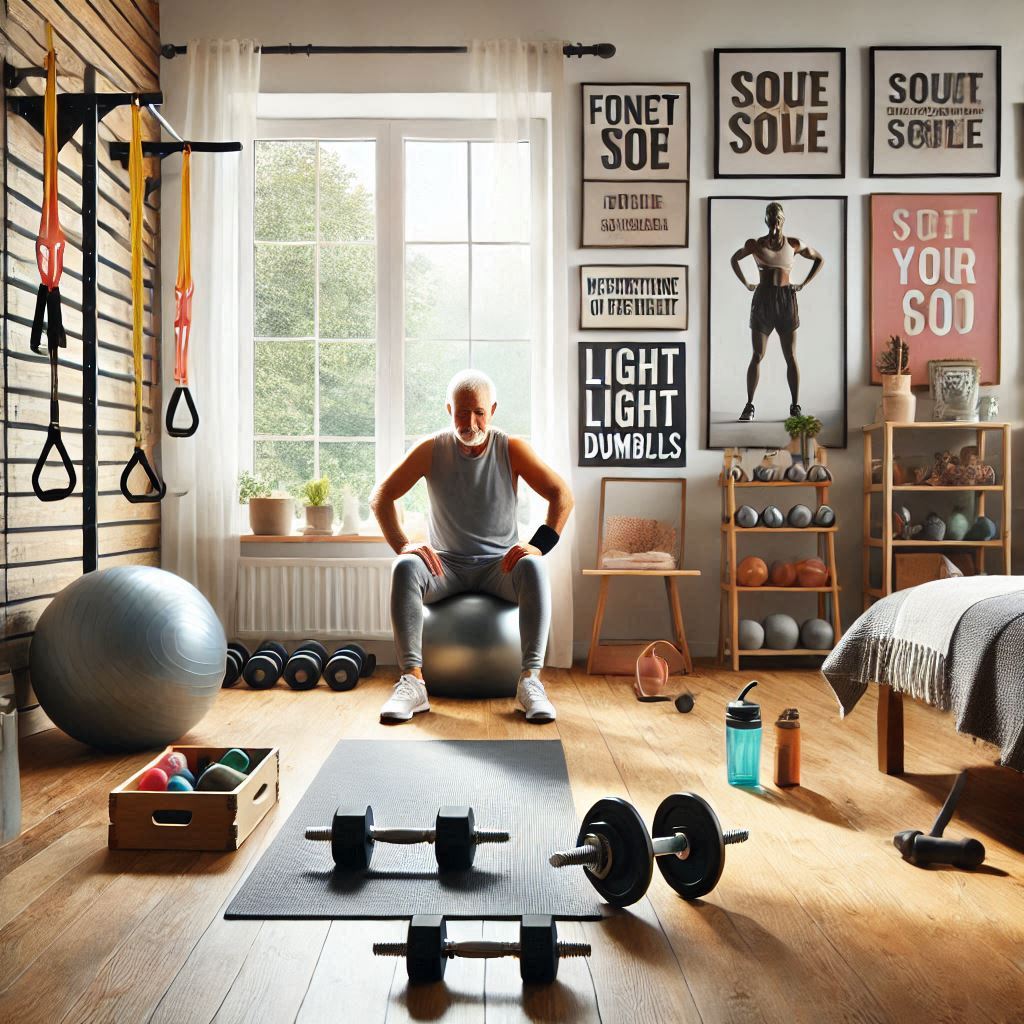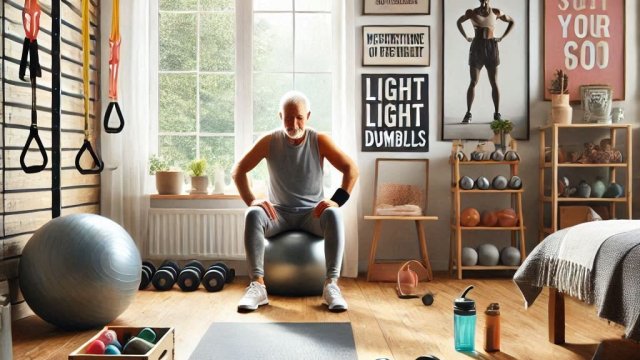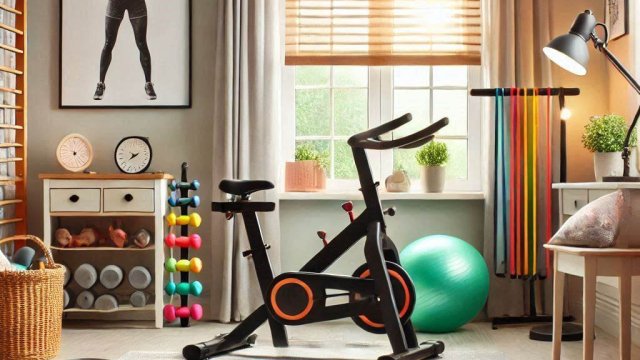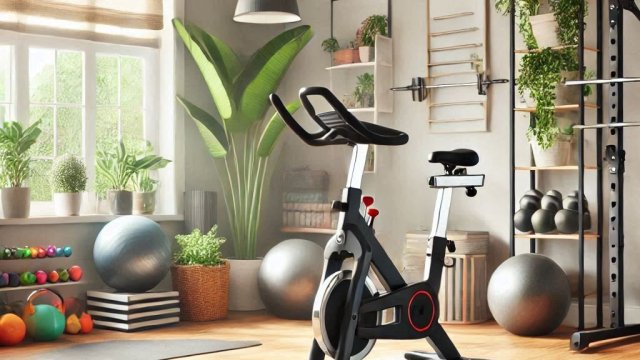
As we age, staying fit becomes more crucial than ever. I’ve seen firsthand how the right home gym equipment can make all the difference for those over 60. It’s not just about maintaining strength; it’s about enhancing mobility, boosting energy, and improving overall quality of life. In a world where convenience is key, creating a personal workout space at home offers flexibility and comfort.
When I started exploring options, I discovered that the best equipment isn’t always the most expensive or complex. Simple, effective tools can cater to various fitness levels and goals. Whether you’re looking to build strength, improve balance, or just stay active, the right gear can empower you to embrace a healthier lifestyle. Join me as I dive into the top home gym essentials that can help you thrive in your golden years.
Overview of Home Gym Equipment
Home gym equipment provides convenience and accessibility for individuals over 60. Focusing on specific needs, choosing the right tools enhances fitness levels, strength, and overall well-being. Essential items vary depending on personal preferences, fitness levels, and specific goals.
Key Categories of Equipment
- Strength Training Tools:
- Resistance bands assist in building muscle without heavy weights.
- Dumbbells offer varying weight options, ideal for strength workouts.
- Kettlebells are effective for dynamic movements and improving overall strength.
- Cardio Machines:
- Elliptical machines serve as low-impact options, protecting joints while promoting cardiovascular health.
- Treadmills provide versatility with adjustable speeds and inclines, fitting various fitness levels.
- Recumbent bikes support the lower back and are great for longer workouts.
- Flexibility and Balance Aids:
- Yoga mats supply comfort for stretches and floor exercises.
- Stability balls enhance core stability and flexibility during workouts.
- Foam rollers are effective for muscle recovery and tension relief.
- Compact Solutions:
- Multi-gym systems deliver a range of workout options in a single device, saving space.
- Folding exercise equipment offers convenience for smaller home setups.
- Resistance chairs provide stability and function for strength exercises.
Considerations for Choosing Equipment
Selecting home gym equipment requires careful thought about individual needs. Considerations include:
- Space Availability: Ensure adequate room for the equipment, considering layout and functionality.
- Budget: Select affordable yet effective options without compromising quality.
- Fitness Goals: Choose equipment aligned with personal health objectives, whether for weight loss, strength building, or maintaining mobility.
The Importance of Quality
Quality equipment influences user experience and effectiveness. Prioritize reputable brands known for durability and safety features. Investing in trustworthy products not only enhances workout efficiency but also ensures long-term use.
| Equipment Type | Recommendations |
|---|---|
| Elliptical Machines | ProForm Carbon EL, Schwinn 411 |
| Dumbbells | Bowflex SelectTech Adjustable Dumbbells |
| Resistance Bands | Fit Simplify Resistance Loop Bands |
| Recumbent Bikes | Nautilus R616 Recumbent Bike |
| Multi-Gym Systems | Marcy Home Gym Multifunctional Trainer |
Home gym equipment acts as a catalyst for improved health and fitness for seniors. By carefully selecting appropriate tools that cater to individual goals, staying active and maintaining a healthy lifestyle becomes attainable in the comfort of home.
Key Considerations for Over 60
Choosing home gym equipment for individuals over 60 requires careful consideration of specific needs and physical capabilities. Safety, space availability, and storage options play significant roles in selecting the right equipment.
Safety Features
Safety features are paramount when selecting home gym equipment for seniors. Equipment should include non-slip surfaces, adjustable settings, and safety clips for weights to prevent injuries. Features like padded handles and ergonomic designs enhance comfort during use. For instance, resistance bands with cushioned grips reduce the risk of slipping during a workout. Equipment must also comply with safety standards, such as those set by the American Society for Testing and Materials (ASTM). Ensuring that machines like recumbent bikes or ellipticals have sturdy bases and low step-over heights can provide safer transitions for seniors.
Space and Storage
Space and storage considerations are crucial for creating an effective home gym for those over 60. Compact equipment options, like foldable treadmills or multi-gym systems, maximize workout space without sacrificing functionality. Wall-mounted solutions, such as resistance band sets, can also free up floor space. Seniors should assess their available area and choose equipment that fits comfortably within it. For example, the best home gym equipment for legs could include a compact leg extension machine. Additionally, utilizing under-bed storage solutions for smaller items, like dumbbells or mats, promotes easy access while keeping clutter to a minimum. Smart planning ensures an organized and safe workout environment.
Best Home Gym Equipment for Over 60
Selecting the right home gym equipment can significantly enhance fitness for individuals over 60. I identified key categories that promote mobility, strength, and overall well-being.
Cardio Equipment
Cardio equipment serves to improve heart health and endurance, targeting essential aspects of fitness. I recommend several effective options:
- Recumbent Bikes: These provide back support and are easier on the joints. They work the lower body without excessive strain.
- Elliptical Machines: With low-impact movement, ellipticals engage both upper and lower body muscles. They promote better cardiovascular health.
- Treadmills: Walking or light jogging on a treadmill strengthens the legs. Many models have adjustable inclines to increase intensity without high impact on the joints.
I found that quality brands like NordicTrack and Schwinn produce some of the best home gym equipment for cardio, ensuring safety and durability through various fitness levels.
Strength Training Equipment
Strength training becomes increasingly important as muscles naturally weaken with age. I discovered effective tools to build muscle safely:
- Resistance Bands: These are versatile and adaptable for different exercises, making them suitable for individuals at any fitness level.
- Dumbbells: A set of light to moderate dumbbells aids in developing upper body strength. Adjustable dumbbell racks save space while offering various weight options.
- Kettlebells: These help enhance balance and strength. They can be used for various exercises to target different muscle groups.
Choosing equipment from reputable brands, like Bowflex or Tone Fitness, ensures durability necessary for safe workouts.
Flexibility and Balance Tools
Maintaining flexibility and balance is crucial for preventing falls and injuries. I recommend incorporating these tools into regular routines:
- Yoga Mats: A non-slip mat supports safe stretching and balance exercises. It’s essential for comfort during workouts.
- Balance Balls: These provide core strengthening and enhance balance. They’re effective for engaging multiple muscle groups.
- Foam Rollers: Using foam rollers aids in muscle recovery and improves flexibility. They can relieve muscle tension through effective self-myofascial release techniques.
Tools focused on flexibility and balance contribute to overall mobility, especially for seniors. Brands like Gaiam or SPRI offer high-quality options for these essential categories.
By choosing the best home gym equipment for over 60, individuals can empower themselves to stay active and healthy in a personalized and safe environment.
Tips for Using Home Gym Equipment Safely
Using home gym equipment safely starts with understanding your limits and recognizing the importance of proper form. Familiarize yourself with each piece of equipment. For instance, if using a recumbent bike, ensure the seat position accommodates your leg length to avoid strain.
Warm-Up and Cool-Down
Warm-up routines, including dynamic stretches, prevent injuries by preparing muscles for exercise. A simple five-minute warm-up can significantly decrease injury risk. Cool down after workouts with static stretches to enhance flexibility and promote recovery.
Start Slow, Progress Gradually
Starting slow helps your body adapt to new exercises. I recommend beginning with lighter weights, such as 1-5 pound dumbbells, before advancing to heavier options. Increase intensity and duration gradually, such as adding 5-10 minutes each week to cardio sessions.
Proper Equipment Use
Using equipment correctly minimizes injury risk. For resistance bands, avoid overstretching. Keep elbows slightly bent during exercises to prevent strain. When using stability balls, ensure they are properly inflated and resistant to punctures to maintain balance and safety.
Staying Hydrated
Staying hydrated during workouts enhances performance and reduces fatigue. I suggest drinking water before, during, and after exercise. Aim for at least 8 ounces of water every 20-30 minutes during workouts, especially for cardio machines.
Monitoring Feedback from Your Body
Listening to your body ensures safe and effective workouts. If you feel pain beyond typical muscle soreness, stop the activity. As an example, sharp pain in joints or muscles may indicate you need to adjust your form or reduce intensity.
Seek Professional Guidance
Consult a fitness professional if you’re uncertain about using specific equipment. They can demonstrate correct techniques and create personalized fitness plans. Many local gyms offer introductory sessions tailored for seniors.
Equipment Maintenance
Regular maintenance of home gym equipment ensures safety and functionality. Check for frayed cables on resistance machines or cracks in stability balls. Replace damaged components immediately to prevent accidents.
Use Non-Slip Surfaces
Ensure exercise areas are free from clutter and finish with non-slip flooring to avoid mishaps. Yoga mats provide traction during workout routines, especially for balance exercises or floor work.
Buddy System
Consider working out with a friend or family member. Exercising with a partner promotes motivation and safety. They can assist with spotting during strength training or provide encouragement.
Consultation with Healthcare Providers
Before beginning any fitness program, consult healthcare providers, especially if managing chronic conditions such as arthritis or heart-related issues. They can recommend safe practices tailored to individual health profiles.
By following these tips for using home gym equipment safely, I can confidently build a routine that aligns with my fitness goals while prioritizing health.
Conclusion
Finding the right home gym equipment can truly transform the fitness journey for those of us over 60. It’s all about choosing tools that fit our unique needs and enhance our well-being. I’ve seen firsthand how simple yet effective equipment can make a significant difference in mobility and energy levels.
Remember that safety and comfort are key. Prioritizing quality and ensuring our workout space is organized can help us stay motivated and injury-free. With the right approach and equipment, we can enjoy a fulfilling fitness routine that supports our health and vitality as we age. Embracing this journey is a powerful step towards a healthier, happier life.
Frequently Asked Questions
What is the importance of staying fit for individuals over 60?
Staying fit as we age is crucial for enhancing mobility, energy levels, and overall quality of life. Regular exercise helps maintain muscle strength, balance, and flexibility, which are vital for preventing falls and injuries in older adults.
What home gym equipment is recommended for seniors?
Essential home gym equipment for seniors includes resistance bands, dumbbells, kettlebells, elliptical machines, recumbent bikes, yoga mats, stability balls, and foam rollers. These tools cater to various fitness levels and can effectively enhance strength, flexibility, and cardiovascular health.
How do I choose the right home gym equipment?
When selecting home gym equipment, consider your space availability, budget, and fitness goals. Look for quality and safety features, such as non-slip surfaces and adjustable settings, to ensure a safe and effective workout experience tailored to your needs.
What safety features should home gym equipment have for seniors?
Home gym equipment for seniors should include safety features like non-slip surfaces, adjustable settings, and ergonomic designs. These features help minimize the risk of injuries and enable a more comfortable workout experience, encouraging adherence to fitness routines.
Are compact solutions available for home gyms?
Yes, compact solutions like multi-gym systems and folding exercise equipment are excellent for home gyms, especially for seniors. These options save space while still providing versatility in workouts, making it easier to maintain a fitness routine at home.
How can seniors use home gym equipment safely?
Seniors should focus on understanding their personal limits and maintaining proper form when using home gym equipment. Warming up, starting slow, and seeking professional guidance can enhance safety. Regular equipment maintenance and exercising in a safe environment are also essential.
What tips can help seniors exercise confidently at home?
To exercise confidently at home, seniors should warm up, start with light intensity, stay hydrated, and monitor their body feedback. It’s beneficial to work out with a partner and consult healthcare providers before starting any fitness program for personalized advice.







